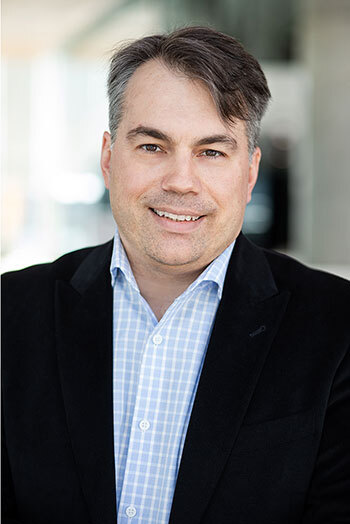Light-Speed Communications

Purchased on Istockphoto.com. Copyright.
Three hundred thousand kilometres per second… That’s the speed of light. If we could manipulate light on chips as easily as electrical information on electronic circuits, the speed of communication networks would not only increase tenfold, but its range would be almost unlimited.
Michäel Ménard has been working on light propagation since his undergraduate studies, making it the subject of his PhD, and he is now pursuing this scientific journey. He has already been granted several patents for inventions as a result of collaborations with companies that rely on photon technology and miniaturization.
And Then There Was Light
It was during his high school years that young Michaël discovered optics in a course given by Alain Saint-Pierre. At CEGEP, he enrolled in a holography course taught by Charan Budhiraja. His interest in the field of light did not wane and at McGill University, he began studies in electrical engineering. There, he met Professor Andrew G. Kirk who became his thesis director. Michaël pursued his research on a new configuration of optical switches using integrated and tunable Fabry-Perot filters. He completed his PhD in Electrical Engineering in 2009.
As a postdoctoral fellow at Cornell University, in the United States, he worked with Michal Lipson, one of the first researchers to explore silicon photonics. The purpose of this technology is to improve the performance and density of telecommunications networks.
The Optics Are in the Chip
One of the major challenges in assembling optical systems is the highly precise alignment required for the many components to function. Such minutia requires a lot of time and money. “Whereas if it is done on a chip, everything is manufactured at the same time; costs are reduced by making miniaturized optical circuits.”
Over time, Michaël sharpened his expertise in the design and manufacturing of photonic microsystems as an intern, then as a research director, and finally as a professor. At UQAM, in collaboration with Professor Frédéric Nabki, he invented a technological platform later commercialized by AEPONYX, a company specializing in the development of photonic integrated circuits.
The Limitations of Silicon
Silicon is the main material used in manufacturing electronic circuits. However, “Silicon is not very efficient at emitting light,” explains Professor Ménard. “Currently, we install a laser next to the chip and connect them.” The goal is to find a way to facilitate the integration of a light source into silicon optical chips, which would represent a major breakthrough in data transmission technology.
As more and more people use information technology to accomplish a growing variety of tasks, the need for more flexible and powerful telecommunications networks is growing.
ÉTS and Research

Michaël Ménard, Professor at ÉTS
Research and teaching go hand in hand because one feeds the other. For Michaël Ménard, teaching at ÉTS is a true privilege. Translating complex concepts and making them accessible to future engineers compel this researcher to be creative. Together, master and apprentices explore new ideas, test the limits of some theories, and verify applications of certain devices. “We’re constantly modifying the challenges.’ One thing is certain, designing miniaturized circuits requires an ability to navigate in the abstract and an uncommon logical-mathematical intelligence.
From Abstract to Actual
Electrical engineering builds a world that cannot be seen—except through a microscope—cannot be manipulated and cannot be felt by touch. And yet, this invisible and intangible world is changing the way the entire planet will soon be communicating, perhaps even from space.
Michaël Ménard is already paving the way for tomorrow’s optical technology to be as ‘common’ as the electronic components in our cell phones.



